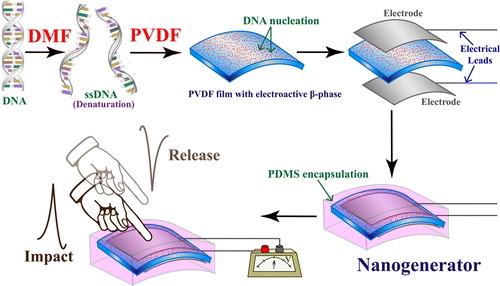DNA Helps Generate Clean Energy in a Small Generator

A nanogenerator made with DNA transforms small movements in energy. The device, developed by researchers from Jadavpur University in Kolkata and Brandenburgische Technische Universität in Cottbus, can help reduce electronic waste and increase battery life. The work was published in in the journal ACS Applied Materials & Interfaces.
The movements people make in everyday life -tapping on screens, walking, running, cooking, cleaning- inadvertently generate energy that ends up unused. The ability to capture that energy and transform it into electricity would benefit the environment by reducing dependency on oil-based energy. Moreover, electronic gadgets would increase their battery life and perhaps would not need to be connected to the grid anymore. The team of Indian and German researchers managed to take advantage of the unintentional power generated by human motion and fabricated a flexible nanogenerator (NG) with a poly(vinylidene fluoride) (PVDF) film. Denatured DNA was added to the film to “align the molecular −CH2/–CF2 dipoles of PVDF causing piezoelectricity without electrical poling”. The NG converts energy efficiently and is able to turn on several green or blue light-emitting diodes. Many gadgets could be designed to use the energy generated from motion and stored in capacitors.

